

| Newsletter
Home | ECR Homepage |
ECR Shop
| ECR
YouTube | ECR
Groups.io | ECR Facebook |
June 27, 2022
MORNING BREW Q&A - By Michael K2SHF Thank you to all who checked in to the Morning Brew. The following are answers to some of our recent daily questions. We asked the following questions. As always, only answers with a tally of 2 or more were included below. Thanks to Derby Dan (KD2VNU) for his hard work in logging the answers and tallying the results after each net. 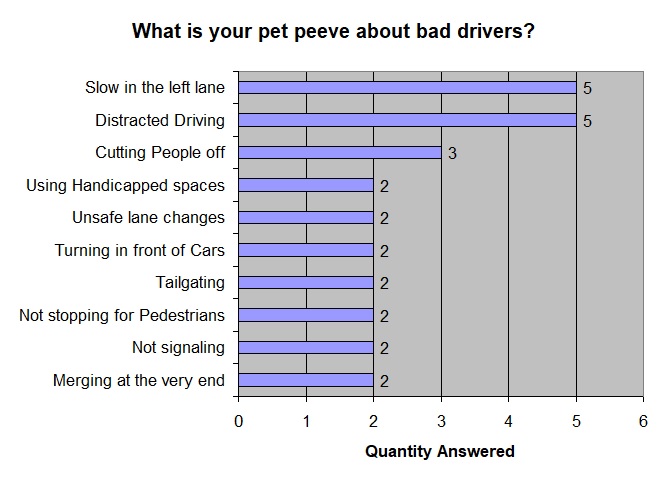 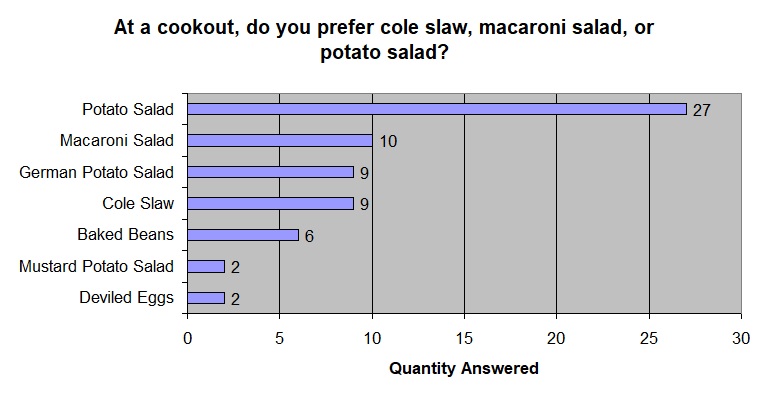 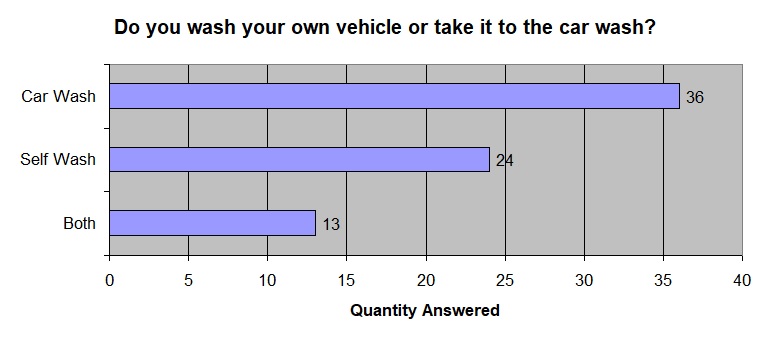 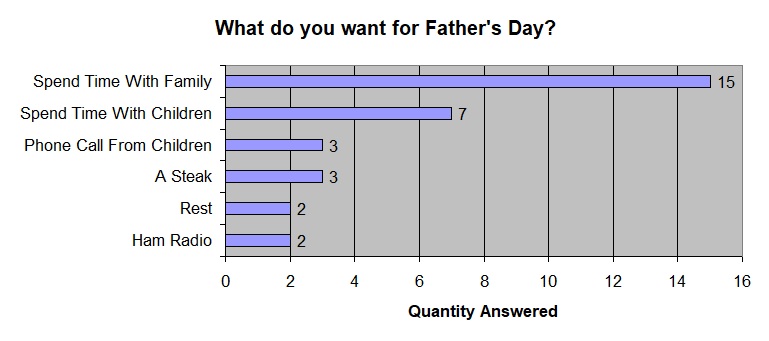 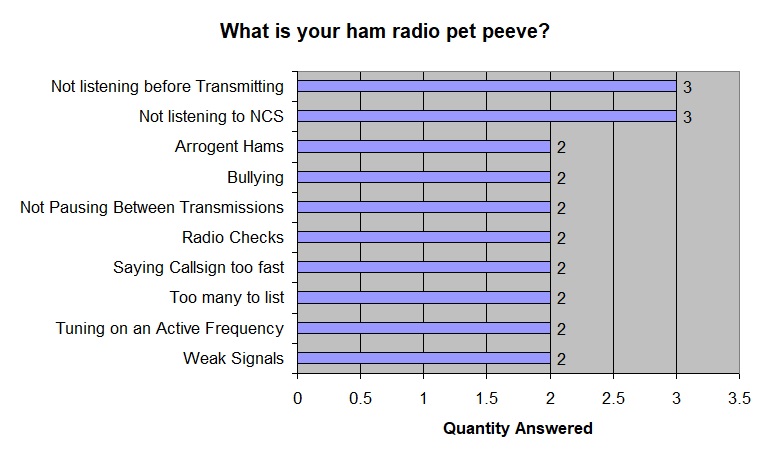  ECR BIRTHDAYS The following hams are celebrating a birthday over the next week. Happy Birthday to you all! VE3WCF, Charlie of Ontario Canada, has a birthday on Monday, June 27th KE0GKF, Jeff of Bellevue NE, has a birthday on Wednesday, June 29th K2AWS, Alan of Seminole FL, has a birthday on Thursday, June 30th W4LAC, Charles of Arab AL, has a birthday on Friday, July 1st K2ILH, Bill of Buffalo NY, has a birthday on Saturday, July 2nd Would you like your birthday recognized in the Newsletter and on the air during the Tech Net? Just send an email to Michael, K2SHF, with your callsign and birthdate. Your birthday will then be added to our spreadsheet.  THE ANTENNA FARM - By Charles KC6UFM Part 8 – Grounds Hello ECR Family, and welcome to The Antenna Farm. This is your friendly Antenna Farmer Charles, KC6UFM. So far in The Antenna Farm articles, we have looked at things that are clearly and directly related to antennas. This time, we’re going to talk about grounds, an area that many people, including hams, don’t understand the importance of relating to antennas. Grounds are very important in ham radio not only from a safety perspective, but also in terms of making your antennas work well, or at least as designed. Most antennas are designed assuming a “perfect” ground, something that is impossible to reach and unless you live in the middle of a salt marsh surrounded by miles of highly conductive soil is not really even approachable. This means that real world installations will never reach the theoretical maximum performance. There are things you can do, however, to get as close as possible and make your entire station perform better and, more importantly, be safer. There are three type of grounds that impact ham radio, so let’s explore each type and how they impact you, your station, and your antennas. DC Ground System Sometimes called a “Safety” or “NEC” Ground System, this is the grounding system that you are at least passingly familiar with in your house that makes sure each of your appliances has a direct path to ground in case of a short circuit. The “Safety” and “NEC” ground names come from the fact that this grounding system in mandated by the National Electrical Code (adopted in full by most state and local agencies) in order to prevent fires and electrical shocks. While the NEC does have a section on “Amateur Radio Stations,” it too is aimed at safety, not performance. For more info on the NEC, see Sections 810.51 through 810.58. Also, if you are doing any electrical wiring in your shack (like adding a 240V outlet for that new amplifier), be sure to follow the NEC for that installation. The hallmark of this system is there must be a low resistance path to earth ground. Your electric company meets this by driving one or more ground rods at least 8’ long into the earth very near your service entrance point. In some areas of very poor soil conduction, there may be more or longer rods and, in some cases, plates of metal buried. If you were to drive a rod anywhere around your house and measure the resistance between your new rod and the ground pin of an electrical outlet in you house, the resistance should be quite low. Again, keep in mind that the DC ground system is for safety, nothing more. It must ALWAYS be in place. Nothing else you do will legally replace the DC ground. But it usually does nothing for your station’s actual performance. There is one exception that many authors miss...if there is a loose or corroded connection in the household circuits, including the ground line, it can (and usually will) generate no small amount of noise in your RF systems. RF Ground System While the DC grounding system is legally required and you really should not mess around with it, there is another, more important grounding system that impacts your entire ham station. Again, the NEC does have a section on radio station grounds, but you can—and should—go beyond those minimal requirements with an RF Grounding System. Many antennas need a good RF ground to work properly. Things like ¼ and 5/8 wave verticals, J-poles, and just about everything else need a good RF ground. In general terms, your antenna will need a ground plane to “work against” and the quality of the RF ground determines how things like take off angle, lobes, and other issues affecting your antenna’s performance will react. Your equipment (and I mean ALL equipment) should be bonded to the RF grounding system that is, in turn, bonded to the DC grounding system. You will sometimes hear people talk about having “RF in the shack” or getting shocked when they touch their microphone and other similar things. Almost all of these phenomena can be traced back to one or more problems with the RF ground. Other things that should be a hint that there is a problem with RF ground include unexpected radiation pattern (either elevation or azimuth), unusual SWR readings, heavy noise pick up on receive, and more. One rule you should keep in mind… All good RF grounds make good DC grounds, but the best DC grounds are likely horrible RF grounds. The reason for this rule is in the names of the grounds...with DC, all we need to look at is the resistance of the path to ground. With RF, reactance comes into play. All conductors have resistance and a certain amount of reactance, but while resistance is constant no matter what the frequency of the applied energy might be, reactance varies with frequency. If we consider a case where we have a coil (inductor) in a series circuit, at DC (or even at the normal 60 Hertz of household AC supplies), it may only present a couple of ohms of resistance and a similar value of inductive reactance. But if we increase the frequency to a few megahertz, while the resistance stays the same, the inductive reactance could easily go to several million ohms. This high inductive reactance will effectively block RF current flow through the ground system. A similar thing applies to parallel capacitance, though that is much less common but comes with an entirely new set of problems. The take away is that as frequency increases, so does the impedance of the system. Because of this effect, RF ground systems need to have a different approach than DC grounds. A few of these changes are: In a DC system, wire large enough to carry the fault current will do the job (subject to NEC rules for minimum conductor sizes, of course). In an RF system, you must use conductors that can both carry the fault current AND have low impedance. This means that for an RF system, in most cases, forget the idea of using wire. You need heavy braided cable with large dimensions or, better still, strips of copper sheet as large as possible. This sheeting or braid will present a much lower impedance (a combination of inductive and capacitive reactance) and so present a low impedance to RF current flow. Failure in this part of the system will cause RF feedback into your equipment and could give you a nice RF burn. Next, you MUST have a common point for ALL RF ground connections. In other words, don’t run a bunch of conductors out to a ground rod. Instead, get some kind of large metal bar and connect each piece of your equipment to that that bar using low impedance braids or sheet, then run a single low impedance line to your ground rod. And don’t forget to ground the less obvious things like your PC, the half dozen or so Raspberry Pi units you have, your desk lamp, your monitors, and everything else. If it uses electricity and is in your ham shack, ground it! The biggest impact of a failure here is noise and RF feedback. Never EVER have more than one ground point with (for example) one line run from the transmitter to one ground rod and another line run from the amplifier to another ground rod. Also, do not “daisy chain” ground straps/sheets from one device to another...run a strap from each piece of equipment to the common ground buss bar. Doing otherwise can easily create a “ground loop” where you have current flowing from device to device through the ground system. This is 100% guaranteed to cause a multitude of problems for you. Lastly, your ground rod will likely be more than one rod. Here in Southern California, the ground is quite sandy, and sand is a poor conductor. I have a total of 16 ground rods each 8’ long and driven into the ground at 10’ intervals in a 4x4 rod grid. The top of each rod is about a foot below grade. The rods are all connected together with 2” wide by 1/4” thick copper braid in a mesh configuration. More braid connects back into the shack to the 4” by 1/2” copper bar that all my equipment connects to using copper sheet or braid. Yes, it wasn’t cheap and it took some work to install, but I have a good, solid RF ground. In addition to giving you a good RF ground system, we need to think about lightening… First of all, if your antenna takes a DIRECT lightening strike, there is no protection you can afford. Many hams will say something like, “Well, broadcast radio stations take direct hits all the time, and they survive.” True, to a point, but how much did that protection cost? For a typical ham, if the protection costs more than about $20,000 or so, it would be cheaper to replace the gear. And it will cost more than $20,000. A LOT more. A local AM broadcast station I worked with in Missouri had a $250,000 protection system. Their main transmitter got cooked on average every 18 months. The good news—sort of—is that most lightening damage to ham radio comes from nearby strikes as opposed to direct hits, and they are fairly easy to protect against. Good lightening arrestors (a serious misnomer) are not all that expensive, and they work. The company PolyPhaser (https://www.polyphaser.com/) offers some excellent products and a lot of white papers on protection in general. But all of these lightening protection systems also need a good, low impedance path to ground. Sound familiar? Lightening is amazingly broad spectrum with frequencies swinging from as low as 1 Hz up to around 300 MHz. Even a strike 50 miles away can hit your station with a huge pulse of energy concentrated in the 25 KHz range but extending up to 30 MHz. Devices like those from PolyPhaser will safely shunt these impulses to ground and protect your equipment if—and ONLY if—there is a good RF ground system in place. If the ground system has too high of an impedance to the earth, all that energy will simply blow into your radio. I would strongly suggest that you invest in a copy of the ARRL’s book “Grounding and Bonding for the Radio Amateur” (https://home.arrl.org/action/Store/Product-Details/productId/133989) as it covers both DC and RF grounding in great detail. This book is priced at less than $30 and is actually worth twice that much. If there are radio clubs or other hams near you, maybe the club has a copy or a few hams could go in and buy a shared copy. Lastly, don’t forget about impulses coming in over the AC mains. Some electric companies routinely install surge protection on their service drops, and others will install one if you contact them. Most don’t do either. Get some good AC line surge protectors. And remember to check their display LEDs regularly, and replace them as needed. A surge protector will lose a little of it’s ability to protect with every surge it absorbs. In other words, they do wear out. Coffee Grounds Probably the most important of the ground systems, coffee grounds are often forgotten. Over a long weekend of contesting or even just rag chewing with DX stations, you’re likely to build up quite a pile of coffee grounds, and how you handle them, the resulting caffeine buzz, and the unavoidable crash is very important. Mishandling any of these factors could easily impact not only your performance as a ham operator, but also your relationships with your boss, coworkers, and XYL. Trust me, it’s no fun sleeping on the couch for three days after a weekend contest. First of all, be sure to properly dispose of the coffee grounds. A good option is to use them as plant fertilizer. Just remember to dilute them with some water first to limit the acidity. I strongly suggest that you not try them as hair dye...especially on your XYL’s hair. And unless you like working on the household plumbing, don’t dump them down the drain. Oh, and never EVER just leave them in the pot for your XYL to clean up. That will not end well. Second, when that buzz hits you, resist the urge to run to the rest of the family to brag about the contact you just made. It doesn’t matter where the contact was made to, they don’t want to hear about it. Your XYL most assuredly doesn’t want to hear that you place a higher value on DX—no matter how rare—than spending time with her watching “Titanic” for the five-hundredth time. Again, this will not end well. Lastly, when the caffeine crash hits you, don’t even think about sleep. You have to go to work Monday morning, and then there will be taking the kids to band practice, and finally there will be taking the XYL out to dinner. And that’s just Monday. It gets worse as the week wears on. It is ill advised to tell anyone that you’re too tired to [fill in something here] because you were on the air for 72 hours straight. Not only do they not care or understand, they will accuse you being just a little kid with very expensive toys. Something you can take solace in is that there are very few weekends with back-to-back contests. Next time, we’re going to take a closer look at matching your antenna to your feed line. You can have the best antenna in the world, a great ground system, the best feed line money can buy, and an amplifier that dims the lights in half of the city when you key up, but if you can’t get the energy into the antenna, it’s all worthless. We’ll learn how you can match everything up in terms of impedance and get the most out of your station. Take Care & 73 de KC6UFM Charles HOW CAN YOU HELP OUT WITH THE NEWSLETTER? Looking for inspiring journalists to interview various ECR ham radio operators on a monthly basis for the ECR newsletter. The interview will concentrate on amateur radio related interests. The pay is on the extreme end of low. No paid vacation or medical benefits. If interested please contact Michael K2SHF, Ben K8BWK, Tom KE3GK or Scott W2BLT LARGE RADIO WAVE DATA COLLECTED BY AMATEUR RADIO OPERATORS Taken from The ARRL Letter dated June 23, 2022 Dr. Nathaniel A. Frissell, PhD, W2NAF, recently published a research article titled, "First Observations of Large Scale Traveling Ionospheric Disturbances Using Automated Amateur Radio Receiving Networks." Dr. Frissell is an assistant professor at the University of Scranton's Physics and Electrical Engineering Department. Supported by a team of researchers from NASA and the Ham Radio Science Citizen Investigation (HamSCI), he was able to observe the large waves for the first time. Volunteers from the amateur radio community collected the data. The waves are larger than the state of Texas and travel through the Earth's atmosphere faster than jet-powered aircrafts. They affect all forms of communication, including amateur radio. You can read the original research paper here or at the NASA Citizen Science Highlight website.  YACHT NEWS for June 25, 2022 - By Ed KG8CX Young Amateurs Communications Ham Team, K8KDZ Sailing Through Radio Waves Connecting Young Hams, Creating Friendships, Expanding the Voice of Youth in Ham Radio Inspiring Youth with Enjoyment & Technology of Ham Radio -------------------------------------------------------------------------------------- NET REVIEW... Great youth net with 26 connections. Youth showing up: 2W0KYH, KC3OTG, KC3RAP, K0EFW, KE8IKS, KJ7MPQ, KE8RJU, KJ7AGO, VU3EFZ, KJ7MFU, YS1YXI, K0NNK, VU3EWP, KE8LQR, KO4PPD (checked in by Katie). Thanks to all check ins. Appreciate your support. CHAT SESSIONS... Monday: Another good one. Youth stations KE8RJU, KI5JXQ, VU3EFZ, KJ7AGQ, YS1YXI, KE0ZNV,K0NNK, KE8LQR along with K3CL, KS8O Tuesday: Nice group of youth on board: KJ7AGQ, KC3RAP, KE8TJU, KE8RJU, VU3EFZ, KL5IS, VU3EWS, YS1YXI, KI5JXQ, KE8LQR, K0NNK, KI5LGS, KI5LGR. Also heard from K3TEL, K5NO, and KO4IHM Tune in tonight, Wed., for another edition of YACHT chat. YACHT YOTA CAMP CREW... group photo of our team at Cincinnati last week 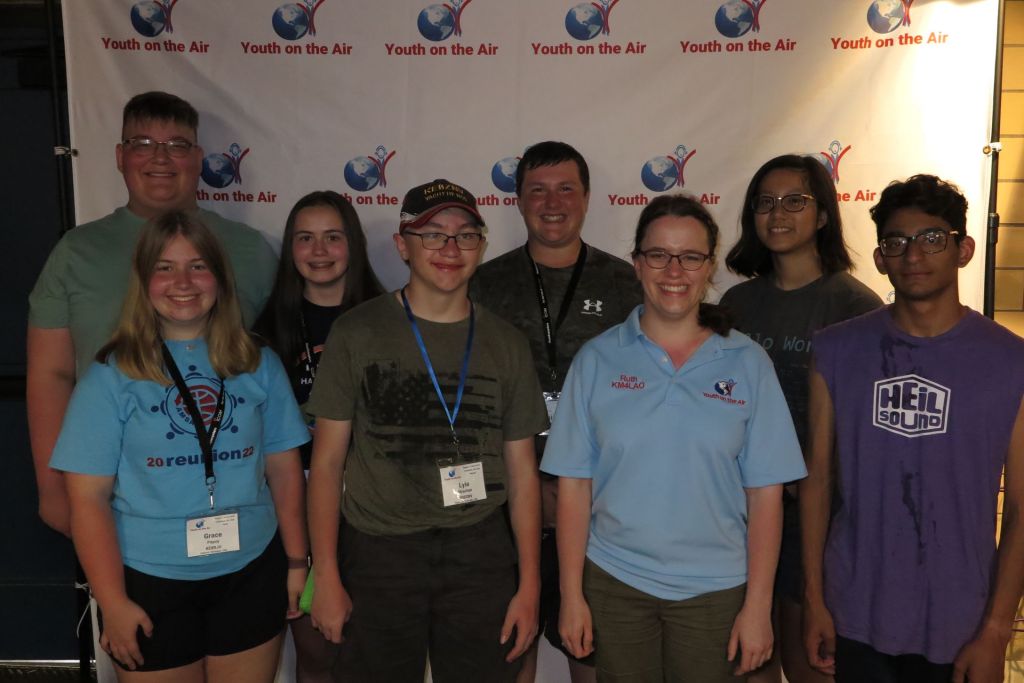 Back row: W3MLJ, KE8LQR, KN4VKY, KI5TRQ...Front row: KE8RJU, KE0ZNV, KM4LAO, KE8MPK YOTA SUMMER CAMP IN CROATIA... Check out the photos in this link https://www.hamradio.hr/yota-gallery/ Scroll through and note one of the young hams shown is Filip 9A3BCW. He is 14 and I have written to him. He responded and is now aware of YACHT and will try and connect up when he has echolink available. At this point, Mily YS1YXI is one of 4 young hams from the Americas to be accepted for camp. The camp is scheduled for August 6-13. The photos also show the beauty of the country. One of our young members is 9A3LLL Lana who is from Croatia. YACHT ANNIVERSARY COMING UP... We were organized in July of 2007, by myself and Jim KS8O, so this will be our 15th year anniversary. We started with 5 local young hams and are now several hundred strong, although many are no longer active on the bands or with us currently. I still carry our member list from Day 1. Most of our growth has been since 2014. We have gained 59 new members this year, 46 youth and 13 older hams. I consider ages 23 and under to be in youth category. Our members are of the highest quality in the field of young hams. We have members who have won the Newsline Young Ham of the Year award, ARRL Hiram Percy Maxim young ham, been involved with youth DX-peditions, major contest stations such as K3LR, speakers at Carole Perry's youth forums, and more. We are proud of all the accomplishments made by our many members. Our older ones are also of high quality and continually promoting amateur radio and technology to youth. Our youth are active, not only on the YACHT echolink system, but also in CW, SSB, Satellites, P.O.T.A., Contesting, DX, digital, DIY, and more. Several of our youth are also ARRL youth representatives for their home state. We have also been involved in YOTA camps both here in North America and Europe. We have members across the USA and the Americas and in a number of countries overseas. What will the rest of 2022 bring? Time will tell. We keep in touch by YACHT NEWS, our echolink and HF activities, Hamvention, other ham gatherings and on Facebook. Hopefully we are a force for ham radio youth. I hope you are happy and proud of your affiliation with our group. FIELD DAY... I plan to run the youth net at 7pm CDST on Sat. June 25. Not sure if I will run it at FD site or here at my QTH. Hope many of you will be on HF this weekend for the biggest ham event of the year. Listen for our club W8PIF 2A Michigan. YACHT YOUTH FROM POLAND... Zofia SN9ZJ continues to be very active as a young ham. Her latest achievement, a SOTA award, shown in this photo 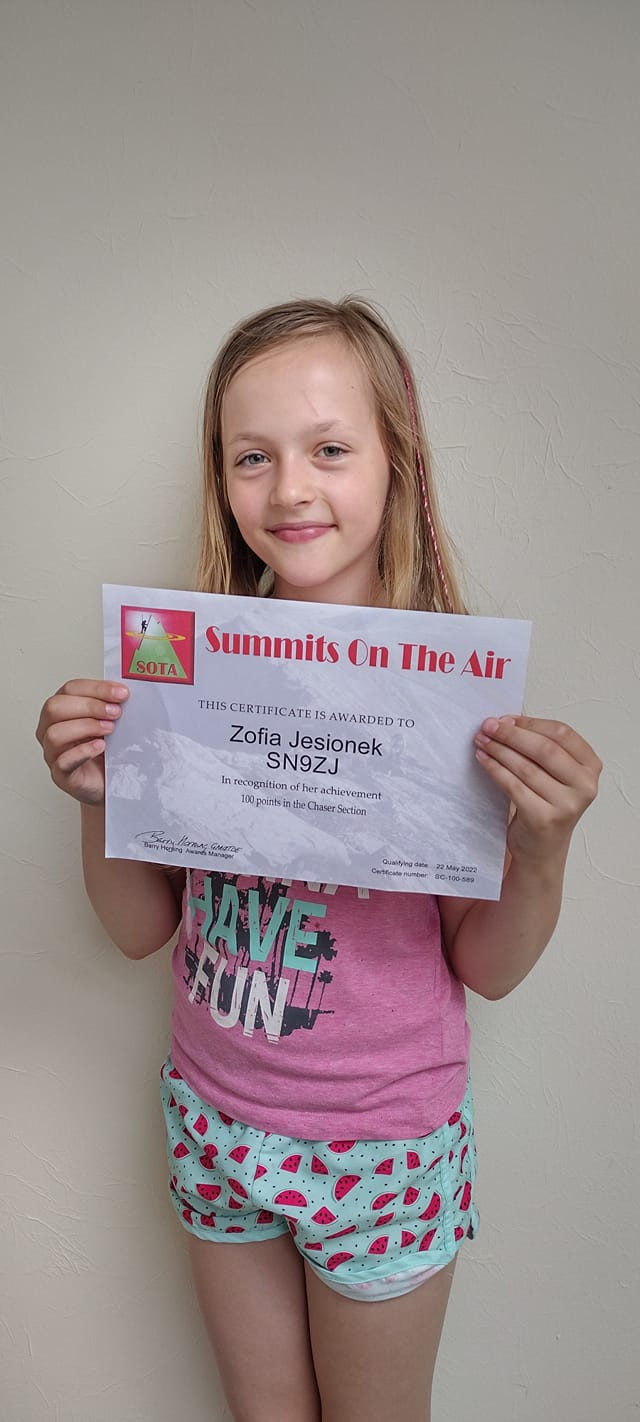 NEW MEMBERS... Welcome to these new members: VU3FCE Lokajith, VU3EFZ Neil, W5RFT Jack, KN6IVW Dylan, KJ7AGQ John, VU3HQO Sapatdeep, OH2CFZ Juuso and VU3EWS Arjun, 4 from India, 1 from Finland, and 3 from U.S. We are truly global in our membership. YACHT MEMBER WEBSITE... Here is Asa's home page KL5IS https://qsl.net/kl5is/home.html He also creates digital music. Check out this example of his creativity https://www.bandlab.com/anaconda_swap/albums/0bf99bf0-e0f0-ec11-b656-501ac51f67ba Another one next week. CAFECAST INTERVIEW WITH YACHT HAM... Listen to Denny K5DCC as he interviews VU3EFZ [link] YACHT MEMBER SPEAKS TO IMPORTANT PERSON... AnnMarie 2E0RUX from Cornwall, England had a rather interesting contact recently. Read about it here https://www.facebook.com/hayleacademy/photos/pcb.5395716863825846/5395716577159208/ Here is a current photo of her 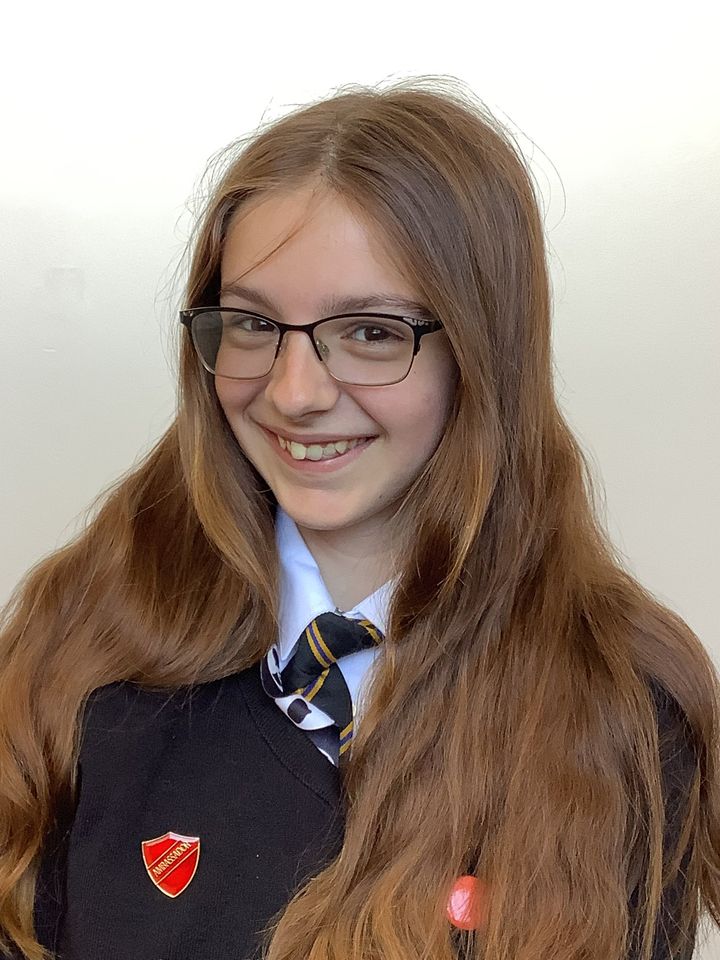 73, Ed KG8CX, YACHT co-founder http://yacht.younghams.org/ http://yachthams.webstarts.com/index.html http://w8pif.webstarts.com/index.html http://www.qrz.com/db/k8kdz |
| FACILITATORS Dick WB2JPQ Henry WB4IVB Emil WA2UPK Bob KB3SNM Tony W2KJV Kevin VE3BZ Paul W4END David KB4FXC Kevin KE7K Joe KO4FRR Mike K2CMT Michael K2SHF Steve K2EJ Keynon KB5GLC Dan KD2VNU Caleb KO4UYJ |
ECR ACCESS IRLP 9050 AllStar 27339, 45192, 45225 Echolink WB2JPQ-R(57780), WB2JPQ-L(375103) DMR Brandmeister 3129973 DMR TGIF 9050 System Fusion 44444, 92805 DStar XRF(XLX)256E HamShack Hotline 94049 P25 31582, 9050 M17 M17-ECR Module A Hams Over IP 15001 NETS Tech Net Tuesdays 8PM ET Morning Brew Mon-Fri 7AM ET YACHT Youth Net Wednesdays 8PM ET |
WEBPAGE http://eastcoastreflector.com ZOOM ROOM Open 24/7. All are welcome! ID: 83929643320 Password: 193414 http://bit.ly/ecrdaily MERCH SHOP http://bit.ly/ecrshop TECH NET LOG http://bit.ly/ecrtechnet YOUTUBE CHANNEL http://bit.ly/ecrYouTube |